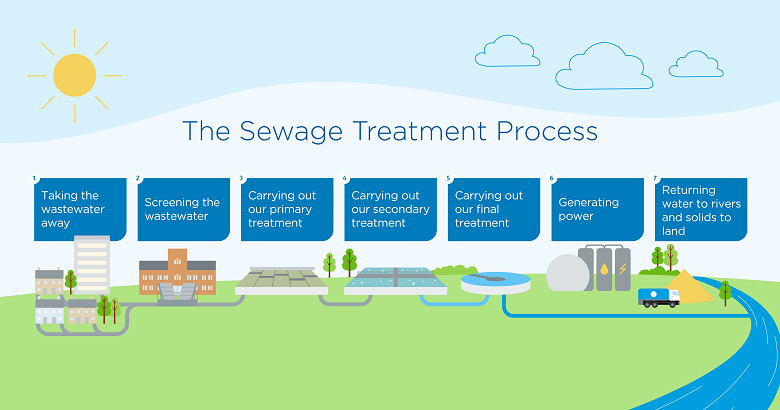The Relevance of Chemical Processes in Waste Water Treatment
Wiki Article
Strategic Approaches to Boost Waste Water Therapy Performance and Lessen Ecological Impact
In the world of waste water treatment, the quest for boosted efficiency and lowered environmental influence is a continuous challenge that requires tactical remedies. As society faces the essential to take care of water resources sustainably, a nuanced approach ends up being essential. The integration of advanced treatment technologies, energy-efficient processes, source healing strategies, improved nutrient removal methods, and clever surveillance and control systems stands for a diverse structure for resolving these pushing problems. What lies at the core of this complex internet of methods is the potential to reinvent the means we come close to waste water treatment, not just as a process of disposal, however as a beneficial possibility for innovation and environmental stewardship.Advanced Treatment Technologies
Cutting-edge membrane filtering systems have actually reinvented innovative wastewater treatment processes, significantly boosting the elimination of pollutants. These ingenious systems function forcibly water through a semi-permeable membrane layer, properly separating impurities from the water stream. The membrane's microscopic pores trap pollutants such as bacteria, viruses, and suspended solids, enabling only purified water to pass through. This modern technology has shown to be highly effective in eliminating a vast array of impurities, including pharmaceuticals, heavy metals, and natural substances, which are often testing to eliminate through standard therapy methods.Furthermore, membrane purification systems supply various benefits over standard treatment strategies. Furthermore, these systems are very versatile and can be quickly integrated into existing treatment plants or made use of as standalone devices for decentralized applications.
Energy-Efficient Procedures
The combination of energy-efficient processes in wastewater treatment systems is vital for optimizing source usage and decreasing operational prices. One key technique to improving energy performance in wastewater therapy is the utilization of innovative oygenation systems, such as great bubble diffusers or surface area aerators, which can boost oxygen transfer effectiveness and decrease energy intake.Additionally, optimizing process control and automation with making use of sophisticated sensing units and keeping track of systems can improve general energy effectiveness by adjusting procedures in real-time based on real need and conditions. Implementing power audits and on a regular basis checking power performance signs are essential methods to identify areas for renovation and track energy-saving efforts successfully. On the whole, the fostering of energy-efficient processes in wastewater treatment not just profits the setting but also contributes to long-term price financial savings and functional sustainability.
Resource Recovery Strategies
With an emphasis on optimizing source usage and sustainability in wastewater treatment systems, the implementation of source recuperation methods emerges as a crucial element in improving operational effectiveness. Source recuperation strategies in wastewater treatment involve the identification and extraction of beneficial resources from the waste stream, therefore turning what was as soon as taken into consideration waste into a valuable property. By implementing resource healing techniques such as nutrient removal and healing, power generation from organic issue, and the production of recyclable water, wastewater therapy plants can lessen environmental influence while taking full advantage of performance.
Boosted Nutrient Elimination Methods
Applying sophisticated nutrient removal strategies is you can try here crucial for optimizing the performance of wastewater therapy systems. Boosted nutrient elimination plays an important role in minimizing the ecological impact of treated effluent discharged right into water bodies. One of the key strategies used for enhanced nutrient removal is the process of biological nutrient elimination (BNR), which entails the elimination of nitrogen and phosphorus with biological processes. This can be achieved via using specialized bacteria that can transform nitrogen substances right into inert nitrogen gas via denitrification, and gather phosphorus within their cells through a procedure called boosted biological phosphorus elimination (EBPR)
Along with BNR, advanced therapy approaches such as membrane bioreactors (MBRs) and created marshes can additionally be employed to boost nutrient elimination efficiency. MBRs use membranes to attain high-quality effluent standards by effectively removing nutrients and suspended solids. Created marshes resemble all-natural marsh procedures to eliminate nutrients through plant uptake, microbial activity, and sedimentation. By incorporating these advanced nutrient removal methods right into wastewater treatment systems, communities and industries can effectively lower nutrient contamination and safeguard the setting.
Smart Surveillance and Control Solution
Utilizing sophisticated innovation, the combination of clever surveillance and control systems changes the functional performance of wastewater therapy centers. These systems incorporate sophisticated sensing units and information analytics to continuously check essential specifications such as pH levels, turbidity, dissolved oxygen, and circulation rates in real-time. By accumulating and examining this information, operators can obtain important insights into the efficiency of the therapy procedures, enabling aggressive adjustments to enhance therapy effectiveness.Smart tracking and control systems likewise support remote monitoring abilities, allowing operators to accessibility real-time information and control functions from off-site locations. This remote accessibility enhances operational versatility and responsiveness, enabling swift treatments in situation of system breakdowns or variations in influent quality. Furthermore, the anticipating maintenance capacities of these visite site systems help protect against equipment failures and reduce downtime, inevitably enhancing the overall reliability of wastewater treatment procedures (Waste Water Treatment).
Conclusion
To conclude, tactical approaches such as advanced treatment technologies, energy-efficient procedures, resource recovery approaches, enhanced nutrient removal strategies, and wise tracking and control systems play an essential role in enhancing wastewater treatment effectiveness and minimizing ecological effect. By applying these techniques, wastewater treatment plants can boost their total efficiency, minimize energy consumption, recuperate valuable sources, and guarantee conformity with ecological laws. These techniques are important for sustainable and effective wastewater administration methods.
In verdict, tactical methods such as innovative treatment modern technologies, energy-efficient procedures, source recovery techniques, improved nutrient removal methods, and wise monitoring and control systems play an essential function in boosting wastewater treatment effectiveness and minimizing ecological effect.
Report this wiki page